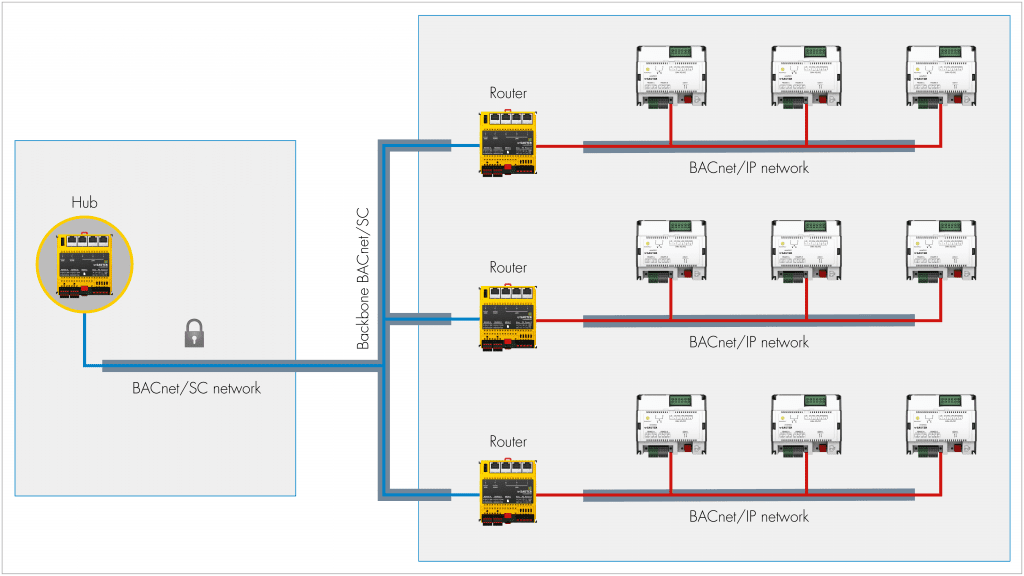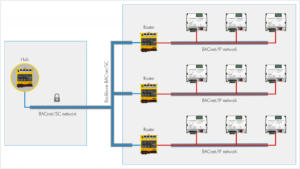
Introduction:
In today’s era of smart buildings and advanced automation systems, efficient communication between various devices and subsystems is crucial. Building Automation and Control network (BACnet) has emerged as a key protocol designed specifically for this purpose. BACnet enables seamless communication, interoperability, and control of diverse systems within a building, making it a foundational element in the realm of smart buildings. In this article, we will explore what BACnet is, how it works, its key features, and its impact on the building automation industry.
What is BACnet?
BACnet, an acronym for Building Automation and Control network, is an open, vendor-neutral communication protocol developed to facilitate data exchange and control commands between devices in building automation systems. It was first introduced in the late 1980s by the American Society of Heating, Refrigerating, and Air-Conditioning Engineers (ASHRAE) and has since evolved into an internationally recognized standard (ISO 16484-5).
The primary goal of BACnet is to enable interoperability among different building automation devices and systems, regardless of the manufacturer. It provides a standardized framework for communication, ensuring that diverse devices, such as HVAC systems, lighting controls, fire alarms, access control systems, and more, can work together seamlessly.
How does BACnet work?
BACnet operates on a client-server model, where devices are categorized as either BACnet clients or BACnet servers. A BACnet client initiates a request for information or control, while a BACnet server responds to those requests. This client-server architecture allows devices to interact and exchange data in a coordinated manner.
BACnet communication can be implemented using different network technologies, such as Ethernet, RS-485, and IP-based networks. It defines standard data objects, services, and protocols for data exchange. BACnet supports a wide range of data types, including temperature, occupancy, schedules, alarms, trends, and more.
Key Features of BACnet:
Interoperability: One of the primary objectives of BACnet is to ensure interoperability among devices and systems from different manufacturers. BACnet’s standardization enables seamless communication and integration, eliminating proprietary barriers and promoting an open ecosystem of interoperable devices.
Scalability: BACnet is designed to scale from small-scale buildings to large-scale complexes. It supports the addition of new devices and subsystems, allowing building automation systems to expand and adapt to evolving needs. This scalability is crucial for accommodating future growth and changes in building infrastructure.
Flexibility: BACnet offers flexibility in terms of communication methods, allowing devices to communicate over different types of networks. It supports various network technologies, including wired and wireless options, facilitating connectivity across different areas of a building. BACnet’s flexibility extends to data types and services, enabling versatile applications and integration of different systems.
Fault Tolerance: BACnet incorporates fault-tolerant features to ensure reliable communication even in the face of network failures or device malfunctions. Redundancy mechanisms, backup servers, and failover configurations help maintain system availability and prevent disruptions in critical building operations.
Data Management: BACnet includes robust data management capabilities. It enables efficient organization, storage, and retrieval of data, allowing for historical data logging, alarm management, trending, and other data-related functions. Effective data management empowers building operators to monitor and analyze performance, optimize energy usage, and make informed decisions.
Energy Management: BACnet supports energy management applications, which are becoming increasingly important in the context of sustainability and energy efficiency. It facilitates the monitoring and control of energy-related systems, such as lighting, HVAC, power meters, and renewable
